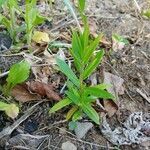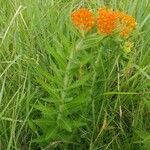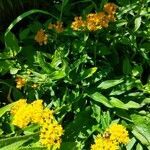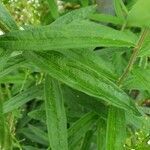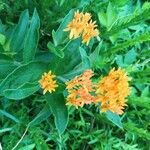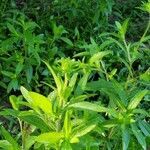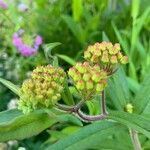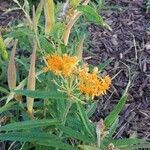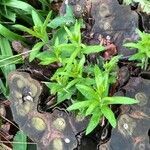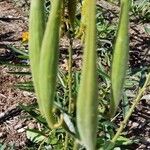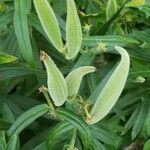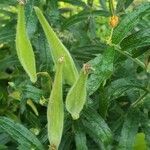Ascending or erect, 3–7 dm, rather coarsely hairy, simple to much branched above; lvs numerous, alternate or on the branches opposite, linear to lanceolate or oblanceolate, 5–10 cm, cuneate to subcordate at base; juice not milky; umbels solitary and terminal to numerous; fls bright yellow to orange-red; cor-lobes 7–10 mm, the hoods 5–7 mm, greatly exceeding the gynostegium, nearly straight, erect, the lateral margins bearing an obscure tooth below the middle; fr 8–12 cm, erect; 2n=22. Prairies and upland woods, especially in sandy soil; s. N.H. to Fla., w. to Minn., S.D., Ariz., and Mex. June–Aug. Var. tuberosa, with the lvs typically widest above the middle, hence abruptly pointed, is the eastern phase of the sp., chiefly in and e. of the Appalachian Mts. in our range. Var. interior (Woodson) Shinners, with the lvs typically widest below the middle, hence tapering gradually to the tip, is more western, chiefly w. of the mts. in our range. Intermediates are abundant.
More
A small shrub. It grows 60-90 cm high. It spreads 30 cm wide. It has a large tuberous root. It is a milkweed which does not have milky juice. It has a woody base and keeps growing from year to year. The stems are erect and hairy. The leaves are narrow and sword shaped. They are 10-14 cm long. They are on crowded stems. The flowers are orange coloured. They occur in heads. The fruit are pointed weed heads 15 cm long.
CAUTION: It contains a glucoside asclepiadin. It is poisonous. Tender shoots, roots and young seed pods are cooked as vegetables. Flowers are used as a sweetener. The flower nectar crystallizes and can be eaten.
